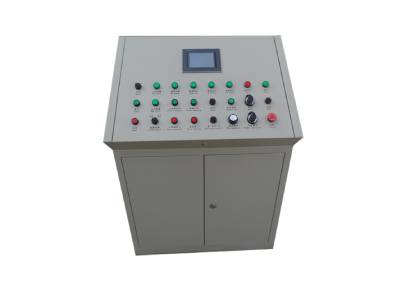Principle and Use of Solid State High Frequency Welding Machine
Solid State High Frequency Welder can not only heat the workpiece as a whole, but also target the local heating of the workpiece; it can realize the deep penetrating heat of the workpiece, and also focus on the heating of its surface and surface layer only; it can not only heat the metal material directly, but also heat the non-metal material indirectly. And so on. High-frequency welding machine and induction heating technology currently has the highest efficiency and fastest speed for heating metal materials, and low consumption and environmental protection. It has been widely used in all walks of life for thermal processing of metal materials, heat treatment, thermal assembly and welding, melting and other processes. It is therefore, induction heating technology has been more and more widely used in all walks of life.
Solid State High Frequency Welder
Induction current is used to make the workpiece locally heated surface heat treatment process. This heat treatment process is often used for surface quenching, can also be used for local annealing or tempering, and sometimes used for overall quenching and tempering. With the development of industry, induction heating heat treatment technology is constantly improving, and the scope of application is expanding. The basic principle of the workpiece into the inductor (coil), when the inductor into a certain frequency of alternating current, the surrounding alternating magnetic field is generated. The electromagnetic induction of the alternating magnetic field causes a closed induction current - eddy current - to be generated in the workpiece. The distribution of the induced current in the workpiece cross section is very uneven, and the current density in the surface layer of the workpiece is very high and gradually decreases inward, a phenomenon called skin effect. The electrical energy of the high-density current on the surface of the workpiece is transformed into heat energy, which increases the temperature of the surface layer, i.e., surface heating is achieved. The higher the current frequency, the greater the difference between the current density of the surface layer and the inside of the workpiece, and the thinner the heating layer. In the heating layer temperature exceeds the critical point temperature of steel after rapid cooling, surface quenching can be achieved.
Induction Heat Treatment Machine also has some disadvantages. Compared with flame quenching, induction heating equipment is more complex, and less adaptable to certain complex shapes of the workpiece is difficult to ensure the quality. Induction heating is widely used for surface quenching of gears, shafts, crankshafts, cams, rolls and other workpieces, the purpose is to improve the wear resistance and resistance to fatigue breakage of these workpieces. Automotive rear half-shaft using induction heating surface quenching, the design load fatigue cycle number than with the quenching treatment is about 10 times higher. Induction heating surface quenching of the workpiece material is generally medium carbon steel. To meet the special needs of certain workpieces, has been developed for induction heating surface quenching special low hardenability steel. High-carbon steel and cast iron manufacturing workpiece can also be used for induction heating surface quenching. Quenching medium commonly used water or polymer aqueous solution.
The use of high-frequency welding machine:
Heat treatment: local or overall quenching, annealing, tempering, and heat transmission of various metals.
Thermoforming: whole forging, partial forging, hot upsetting, hot rolling.
Welding: brazing of various metal products, welding of various tool blades and saw blades and saw teeth, welding of steel pipes and copper pipes, welding of homogeneous dissimilar metals.
Metal melting: (vacuum) melting of gold, silver, copper, iron, aluminum and other metals, casting molding and evaporation coating.
Induction Annealing Machine other applications: semiconductor single crystal growth, heat fit, bottle top heat sealing, toothpaste skin heat sealing, powder coating, metal implantation into plastic, etc.

评论
发表评论